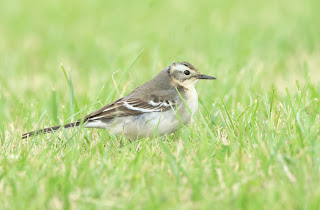Common Nighthawk: This juvenile female was spotted in the early morning roosting on a garden fence along a small cut-de-sac and near some parked cars. The owner of the garden originally thought it was a nightjar before putting news out and getting conformation from the local bird recorder.
It was then reidentified as an American nighthawk. Well it is the first American land bird of the autumn, so along with hundreds of other like minded twitchers I rushed down to a sleepy Oxfordshire market town to catch sight of a rare bird.And I'm glad I did the bird was marvellous, sitting, preening and turning side to side to get more comfortable it roosted there all day.
These are nocturnal birds within the nightjar family, the species is typically dark in colour, displaying cryptic colouration and intricate patterns, making it difficult to spot with the naked eye during the day, but not while it roost in open on top of a wooden garden fence.
Such an amazing bird to see in a bonkers place, but unfortunately I had work commitments so couldn't stick around to see it take flight and live its day time roost, which it did around 7pm and flew off very high and very direct, not seen again.














































